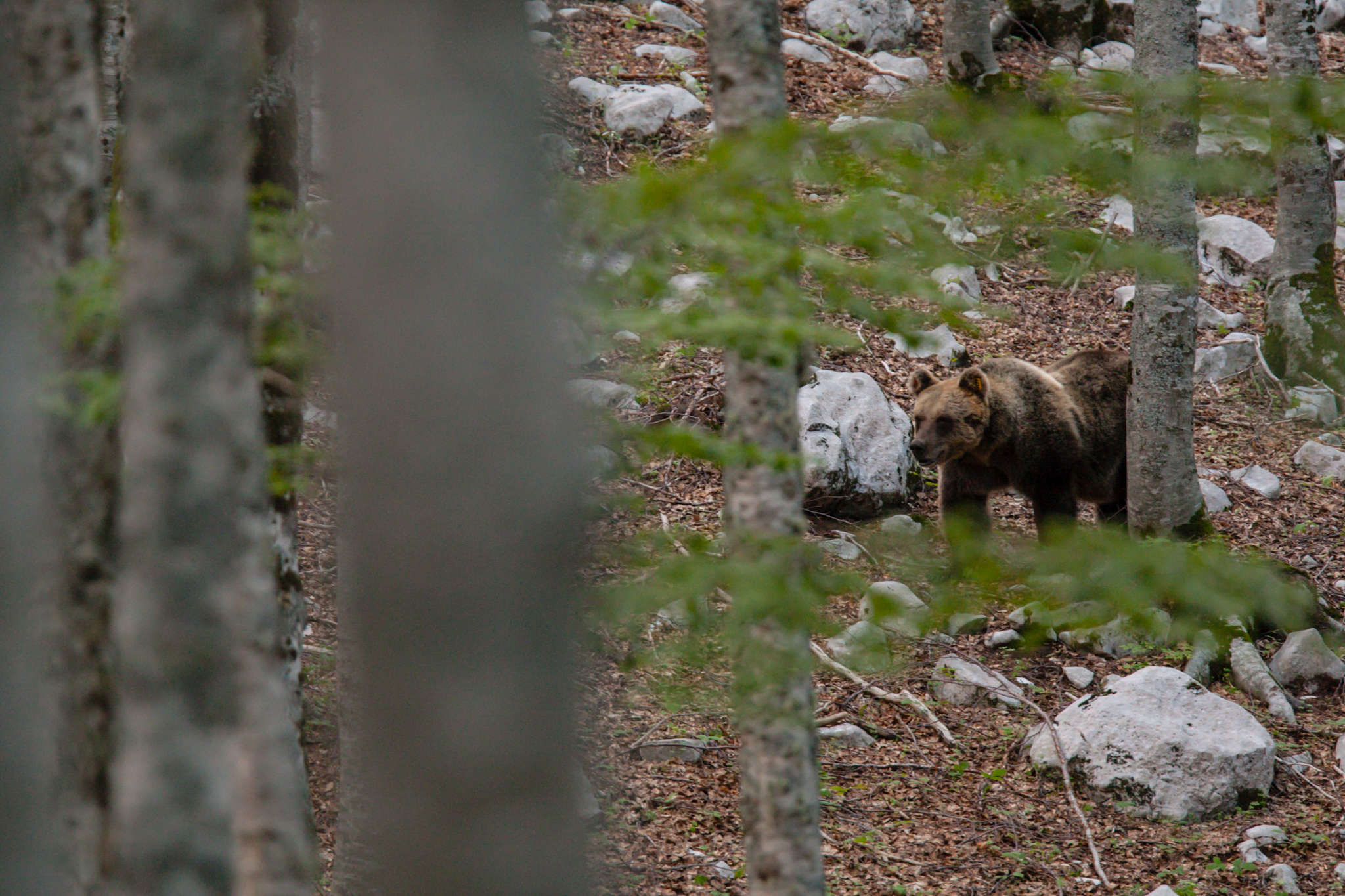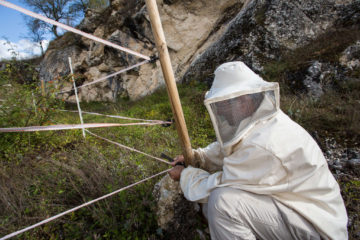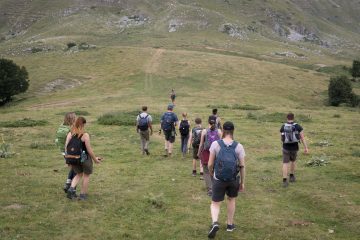The Central Apennines rewilding initiative was relaunched in the summer of 2018. Over the last 12 months, the development of wildlife corridors has provided a better platform for Marsican brown bear recovery.

Bearing fruit
In June 2018 Rewilding Europe relaunched its rewilding initiative in the Central Apennines of Italy. Since then, working in close collaboration with local NGO Salviamo l’Orso, the Rewilding Apennines team has worked hard to mitigate conflict between humans and the area’s endangered population of Marsican brown bears.
Focusing on a network of essential wildlife corridors, these efforts appear to be slowly paying off. With 11 bear cubs born across the Central Apennines region in 2018, the census results for this year will be published before Christmas.
Making the connection
There are currently around 60 Marsican brown bears (including newborns) roaming the Central Apennines, making their situation precarious. While the animals are relatively safe inside the area’s national parks and reserves (mainly the Abruzzo, Lazio and Molise National Park), outside the boundaries of these areas they are at risk from poaching, poisoning and traffic collisions.
With such a small Marsican brown bear population, providing space where the animals can roam safely is vital to ensure genetic exchange. In the past bear-related conservation work typically ignored the corridors between protected areas, which are now recognised as vital to bear survival.
Corridor development
The second half of 2018 saw Rewilding Apennines start to develop four wildlife corridors with a combined area of more than 40,000 hectares. These will create an interconnected network of three protected areas, a biosphere reserve and their buffer zones, with a total area of 275,000 hectares.
Over the last year much of the work of the Rewilding Apennines team has focused on these corridors, improving their value to bears by involving local communities, taking measures to prevent bear damage, and by giving people economic incentives to protect these magnificent animals.
Following the tragic drowning of a mother and two cubs in November 2018, work has also been carried out to make six remote water tanks safe, with another four tanks scheduled for similar treatment by the end of 2019.
Damage prevention
Mitigating conflict between wildlife and humans is often a critical issue when it comes to rewilding. In the Central Apennines rewilding area, where bears and humans live side by side, a large part of such mitigation means working to minimise the damage that bears could cause to local farms, smallholdings and gardens.

Damage prevention is far more effective than compensating people for destroyed property and lost income. For the Rewilding Apennines team and Salviamo l’Orso, this typically means handing out and helping to install electric fences (49 fences were erected in the four corridors in 2018), metal doors and bear-proof bins. Fruit trees have also been regularly pruned in abandoned orchards, increasing the availability of food for bears and steering them away from towns.
Rewilding Apennines team leader Mario Cipollone is satisfied with the progress of such measures over the last 12 months.
“We have seen a general reduction in bear damage right across the wildlife corridors,” says the Italian. “But damage prevention is still an ongoing challenge. The bears are moving around, which is a good indication that the animals feel safe and are expanding their range, but they may end up visiting areas where preventive measures have yet to be taken.”
Grassroots action
Mario Cipollone points out that establishing harmonious human-bear relations involves a lot more than just handing out electric fences.
“We have a real bottom-up approach,” he explains. “We talk to people and inform them. By working with them side by side in the field, and through dialogue and the dissemination of best practice, we not only aim to keep property safe, but to make residents living in the corridor areas feel safe too. We want them to feel that the Marsican brown bear is part of their common heritage.”
Getting smart
Formalising the system of communications and damage prevention across the Central Apennines rewilding area, a “bear smart” community programme was established in 2015. In 2018, Pettorano sul Gizio – a picturesque medieval town of around 1500 people – officially became the area’s first such community. Preparations are underway to establish two more such communities by the end of 2019.
Pettorano sul Gizio is situated in the centre of the Monte Genzana and Alto Gizio Regional Nature Reserve, a vital wildlife corridor that runs between the d’Abruzzo, Lazio and Molise National Park (PNALM) and the Majella National Park (PNM). This small community is therefore strategically situated in terms of Marsican brown bear conservation.
“Since Pettorano sul Gizio became bear smart we have seen a 98 percent reduction in bear damage,” says Cipollone. “This is really great news, especially since a bear was shot and killed here in 2014, supposedly for stealing chickens.”
Volunteer force

The Central Apennines rewilding initiative benefits from the efforts of a wide variety of Italian and international students and volunteers. A steady stream of BSc and MSc research projects are linked to rewilding in the area, and monitoring work is very much dependent on those giving their time freely.
In 2019 around 30 international volunteers have been active in the Central Apennines rewilding area, with some arriving as early as February. Acting as “bear ambassadors”, they are typically responsible for a wide range of duties across the four corridors. These include fruit tree pruning, cleaning up rubbish, removing barbed wire (more than 8 kilometres of wire was already removed in 2018), setting up warning reflectors and signs on roads to prevent bear-related traffic accidents, communications work, and generally searching for the presence of bears.
Future focus
The last few years have seen small-scale but very practical conservation action support the comeback of the Marsican brown bear. Over the last 12 months, the Rewilding Apennines team and partners have continued these essential efforts.
“With the help of Salviamo l’Orso volunteers and positive networking among the area’s national parks and nature reserves, we are building strong, trustful, enduring relationships with local communities,” concludes Mario Cipollone. “Going forwards we will continue our work to support the ongoing recovery of these wonderful, iconic animals.”
